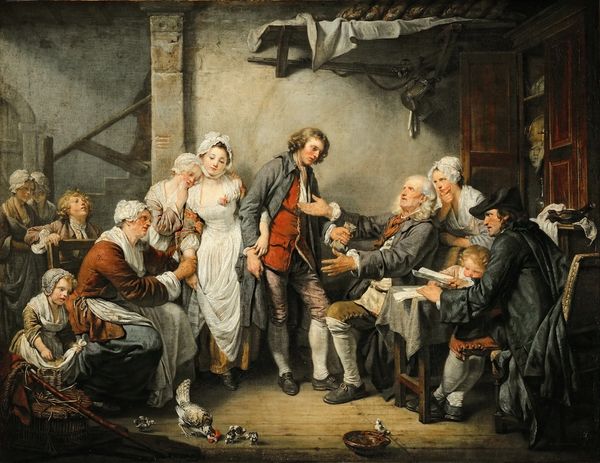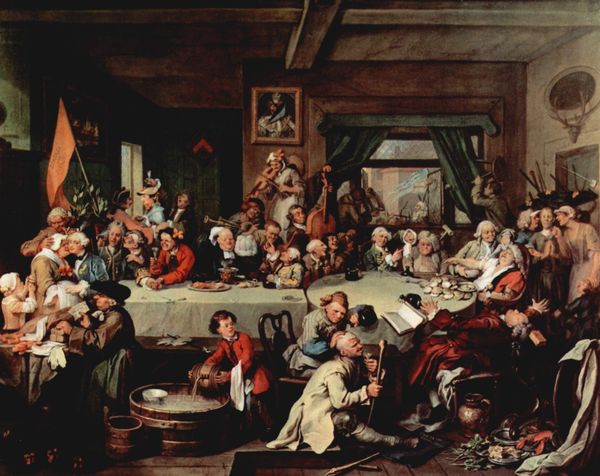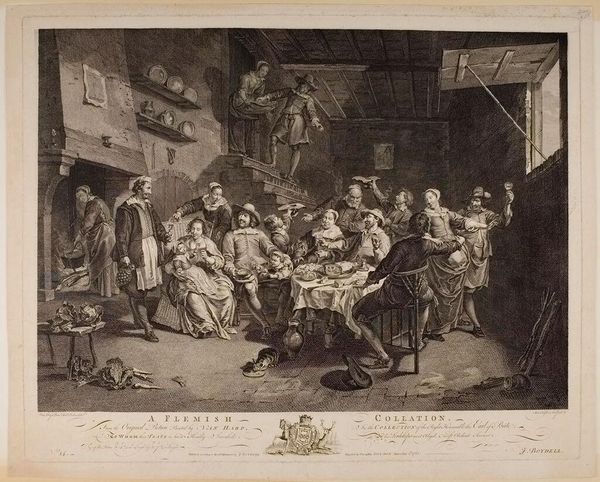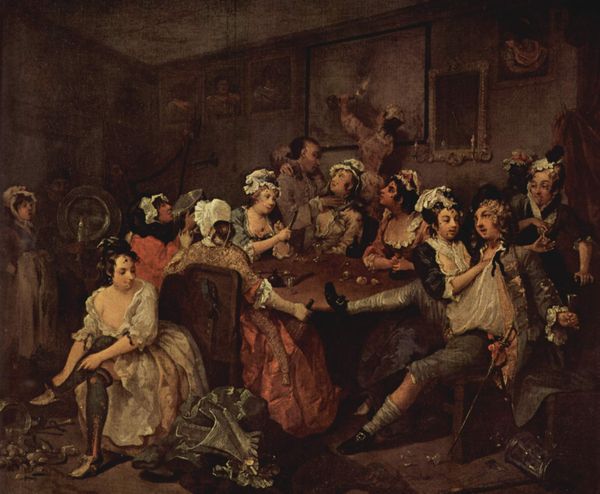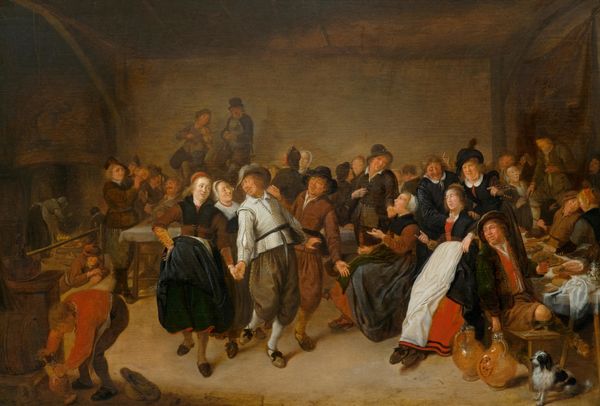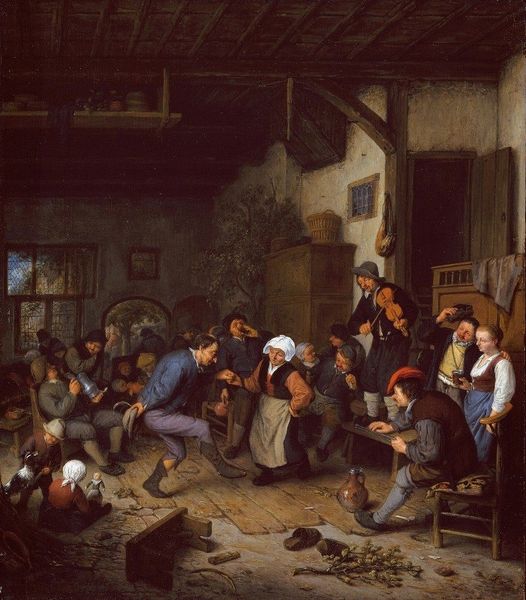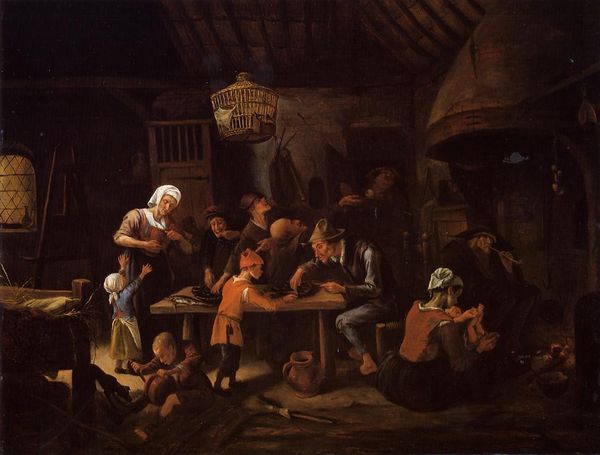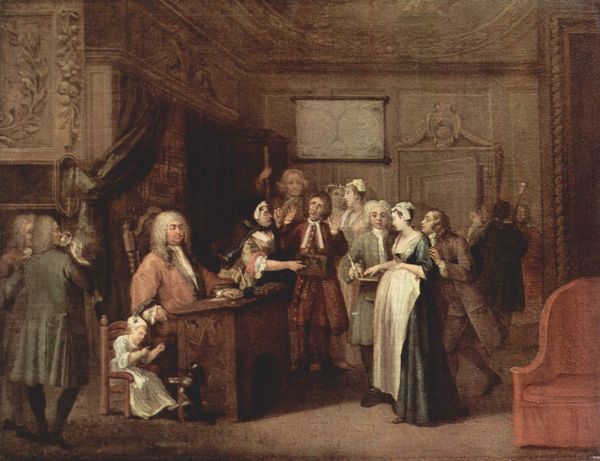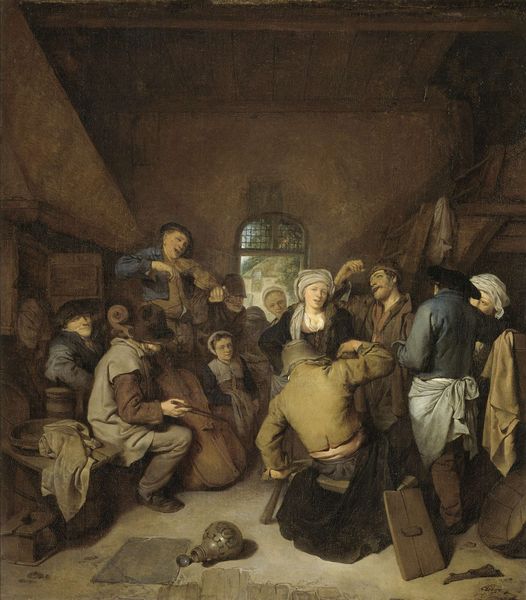
painting, oil-paint
#
portrait
#
narrative-art
#
baroque
#
painting
#
modern-moral-subject
#
oil-paint
#
charcoal drawing
#
oil painting
#
cityscape
#
genre-painting
#
history-painting
Dimensions: 62.5 x 75 cm
Copyright: Public domain
Curator: Good morning. Today we’re considering "The Prison", an oil painting created around 1735 by William Hogarth. Editor: Chaotic is the first word that springs to mind. A mass of figures, dramatic lighting, everything’s tilting... it definitely evokes confinement and societal breakdown. Curator: Precisely. Hogarth used "modern moral subjects" to comment on 18th-century British society. As a narrative painting, "The Prison" illustrates a scene from what was originally "The Rake's Progress." More specifically, the tragic ending to the story. Editor: Tragic indeed. The central figure—the Rake himself, Tom Rakewell—is clearly unhinged. Surrounded by what I assume are equally destitute figures in this…holding cell. His fate reflects society’s treatment of the marginalized at the time. Did he seek to challenge conventional morality here, perhaps in order to underscore societal hypocrisy? Curator: It certainly served to indict a system that fostered vice and then punished the very people it exploited. Look closely, there are indications that at least one female character attended Rakewell due to their affection for him and his descent into madness appears accelerated in part by its ramifications upon her, not his own. His world crumbles around him; a visual representation of mental and social disintegration. Hogarth’s engagement with the visual conventions of the Baroque is also notable. Editor: Yes, and to our contemporary perspective, the work could be viewed as highlighting power structures in its brutal display. There’s this stark intersectional lens—class, sanity, morality—all crashing together within the prison’s walls. Does the "oil painting" technique utilized add any dimension here, from the perspective of highlighting light or shadow perhaps? Curator: The painting’s tonality echoes the heavy theme of institutional failure, class disparity, and personal degradation, with specific visual detail rendered that would have struck 18th century elites just so: by portraying these unfortunate souls so realistically, he implicated anyone who witnessed these unfortunate circumstances. Editor: A brutal tableau that leaves a lasting sting, that's for sure. Thank you for the insights into William Hogarth’s chilling composition! Curator: An indeed chilling visual story, brought to life. Thank you for joining.
Comments
No comments
Be the first to comment and join the conversation on the ultimate creative platform.

